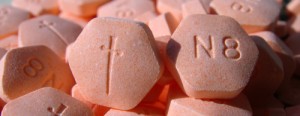 Debating whether addiction treatment should include buprenorphine is a complex issue. This week The New York Times printed an article called “Addiction Treatment with a Dark Side” that explored the history of buprenorphine and the dangers that it poses. This article sparked a debate with the HuffingtonPost and The New Republic both posting rebuke pieces, “New York Times Misses Mark on Buprenorphine” and “The Media Needs to Stop Stigmatizing Our Best Weapon Against Heroin Addiction,” respectively. So what is buprenorphine and what role should it have in addiction treatment?
Debating whether addiction treatment should include buprenorphine is a complex issue. This week The New York Times printed an article called “Addiction Treatment with a Dark Side” that explored the history of buprenorphine and the dangers that it poses. This article sparked a debate with the HuffingtonPost and The New Republic both posting rebuke pieces, “New York Times Misses Mark on Buprenorphine” and “The Media Needs to Stop Stigmatizing Our Best Weapon Against Heroin Addiction,” respectively. So what is buprenorphine and what role should it have in addiction treatment?
Buprenorphine (often sold on the market and prescribed as Suboxone) is an anti-craving drug, like Methadone, used as drug replacement therapy for heroin and painkiller addictions. Partially developed and promoted by federal officials, it has been hailed as a major tool in the fight against drugs. It has been deemed safer than Methadone and has allowed patients to take the medication at home (lessening the community stigma that surrounds Methadone clinic). It has played into the common belief that “replacing illegal drugs with legal ones, needles with pills or liquids and more dangerous opioids with safer ones reduces the harm to addicts and to society.” (NYT) But does this approach really free an addict from the chains of addiction? If not, what then is our goal as addiction specialists?
Buprenorphine is an opioid that produces euphoric high although its effects are not as strong and the risk of overdose is not as high. It was intended as a long-term treatment for people addicted to opioids. But it is often ineffective long-term, because it is highly addictive and difficult to detox from. It leaves many individuals feeling as though they’ve just exchanged one drug for another and remain trapped in an addictive life.
A scary fact that The New York Times uncovered is that buprenorphine is not being monitored closely enough to get a full picture of its dangers and misuse. The CDC “does not track buprenorphine deaths, most medical examiners do not routinely test for it, and neither do most emergency rooms, prisons, jails and drug courts.” (NYT) And although it’s supposed to only be available through federally authorized doctors with a restricted patient load, cash-only clinics continue to grow the underground market.
Last year buprenorphine generated $1.55 billion in sales in the U.S. (more than Viagra and Adderall). It has been found to be lucrative for manufacturers, drug dealers and patients. And because of its money incentive for doctors has attracted a large number of troubled physicians who are experiencing financial problems and/or addictions themselves. It produces enough of a high to be used for recreational misuse, and its new dissolvable film strips are being hyped as ideal prison contraband (where it’s coined as “prison heroin”). It’s caused in increase in seizures and admissions to poison centers and pediatric hospitals for non-medical use and accidental ingestion.
But the biggest problem that buprenorphine presents in addiction treatment is its inability to free an individual from a life of drugs. It prolongs the detox process and puts an individual at risk for exchanging one addictive habit for another. When an individual comes to us wanting to be free from an addictive life, giving them an addictive substance to replace another does not seem like the best choice.


